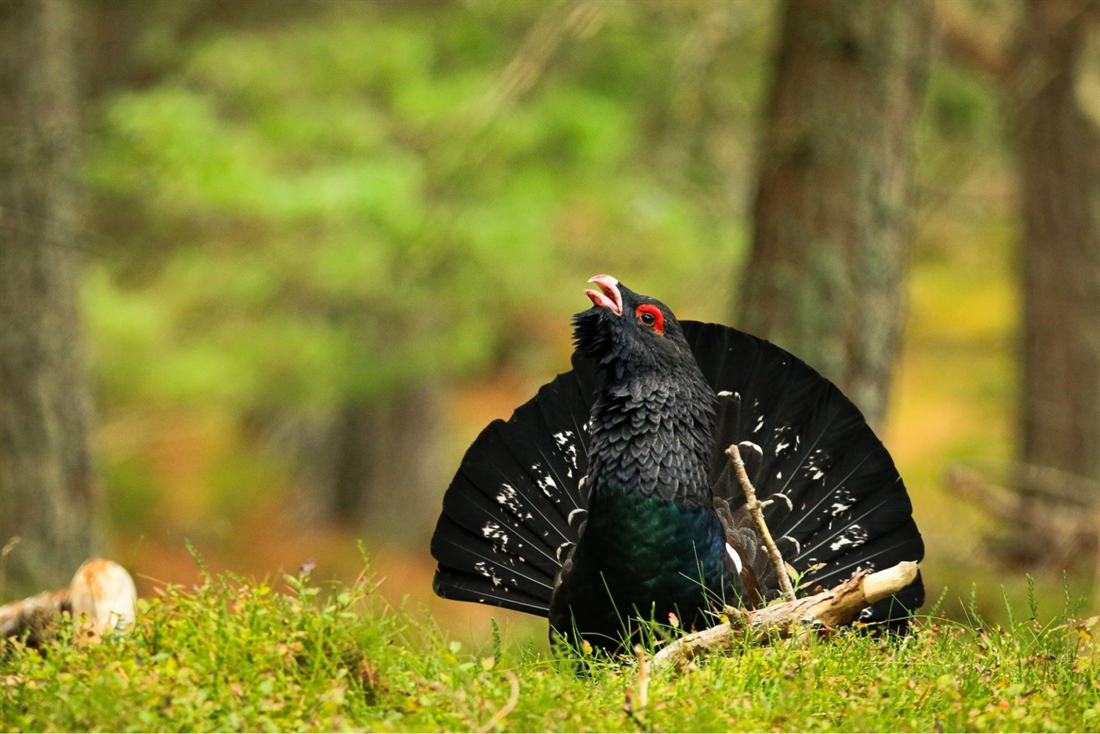Conservation: Save the capercaillie!
The Game and Wildlife Conservation Trust (GWCT) is calling for urgent policy and practical action as the extinction clock approaches midnight for Scotland’s iconic capercaillie.

Capercaillie, the world’s largest grouse, is an iconic species of old pine woods. In the UK, it is confined to the Scottish Highlands, living in fragments of the once widespread Caledonian Forest, where it is in severe trouble. Sharp declines are occurring because fewer chicks hatch and survive in Scotland than elsewhere in their European and Russian range.
This August, the Game and Wildlife Conservation Trust (GWCT) completed its 33rd consecutive year of capercaillie brood surveys. The resultant data show a continued decline in breeding success over time. When surveys commenced in 1991, capercaillie numbered approximately 2,200 birds, spread from Argyll and Perthshire to the south and west, Aberdeenshire in the east and Ross-shire in the north. Now, perhaps only 300-400 birds remain, with 90% confined to one area of Strathspey in Inverness-shire.
GWCT research has shown that capercaillie breed better in years when June weather is dry and warm, and in forests where predators such as carrion crow and pine marten are fewer. This year, despite good weather, the survey found only 0.4 chicks fledged per female, below the 0.6 chicks needed to maintain numbers. This was the fifth consecutive year when insufficient chicks fledged, thus hastening the decline. Despite well-intentioned conservation programmes to improve capercaillie habitat, extinction seems likely within the next 30 to 50 years.
Earlier this year, scientific advisors to NatureScot reviewed causes of decline and urged four immediate management actions. To increase breeding success, they recommended reducing predation by lethally controlling foxes and crows, translocating legally protected pine martens from capercaillie forests and by providing remaining predators with alternative diversionary food. NatureScot subsequently dismissed translocation on feasibility grounds but failed to address the need for proven, immediately available alternatives to protect capercaillie broods.
Meanwhile the Cairngorms National Park Authority (CNPA) has since distanced itself from the crow and fox recommendations of the NatureScot scientific report. The report also identified the need to maintain high adult survival by further marking of or removing remaining deer fences to reduce collision rates, and to create forest refugia from human disturbance.
Lead surveyor Dr David Baines, GWCT’s Head of Upland Research, commented: “The end is nigh for capercaillie unless we quickly turn around the low chick survival. Pine martens have increased in recent decades and are known to consume capercaillie eggs and chicks. Their licensed removal from key capercaillie strongholds is urgently required to help avoid species extinction.”
Will Anderson, Chief Executive of Seafield and Strathspey Estates who hosted this year’s survey explained: “We have been managing and extending our forests to benefit capercaillie for over 30 years and it would appear that neither habitat extent nor quality is limiting their numbers. We are concerned that in a year where weather is also unlikely to be a limiting factor, we have such poor brood numbers.
“We carry out legal predator control but there is no mechanism available to us for managing the impacts of protected predators and we await guidance on what further steps we can take to halt the decline of this important component of our pinewood habitats.”
Rory Kennedy, Director Scotland, GWCT, said: “NatureScot’s Scientific Advisory Committee provided a bold, evidence-based road map for saving the last of our capercaillie. If public bodies and private landowners now choose to ignore its recommendations, then they need to be held accountable for the inevitable extinction of this species in Scotland.”





